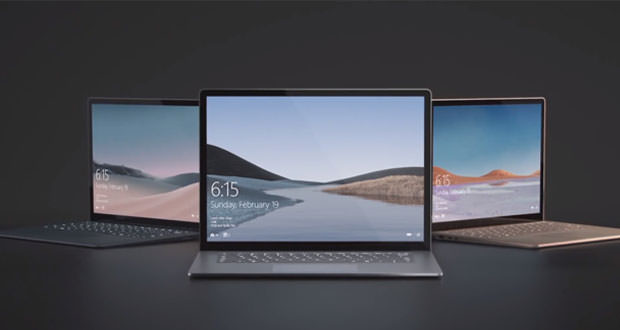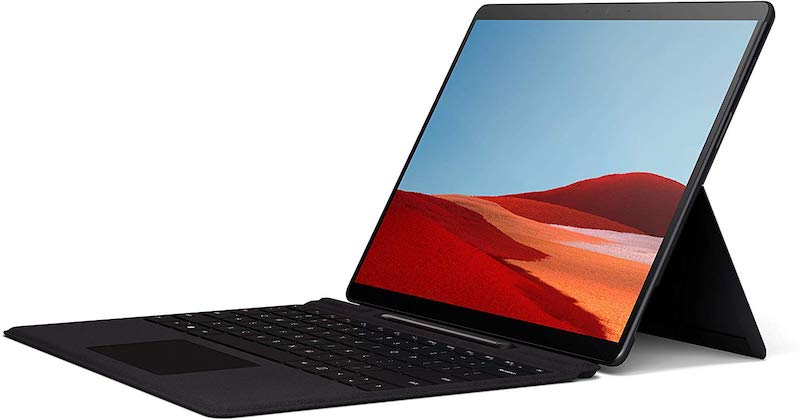3 different CPU vendors for the new Microsoft Surface
AMD, Intel and Qualcomm appear among the manufacturers involved in the launch of the new range of Microsoft Surface solutions. There is a lot of interest for the two versions of Surface Laptop 3, in which AMD and Intel collide on equal terms.
Microsoft announced many news related to its Surface product range. The rumors had created very high expectations related to these ads, and Microsoft has certainly not disappointed. The American company will make many new products available such as Surface Laptop 3, Surface Pro 7 and Surface Pro X.
Microsoft has introduced many new features in these products, but the one that represents a radical change compared to what was done in the past is under the body. The main innovations concern the Surface Laptop 3 range, which not only makes its debut in two different screen sizes (13.5 inches and 15 inches) but is also one of the first notebooks to implement the new tenth generation Intel Core processors based on production technology at 10 nanometers and Ice Lake architecture.
Microsoft has also chosen to use AMD Ryzen processors for the 15-inch diagonal models, supporting them with solutions based on the tenth-generation Core CPU. This is a novelty for the American company that has been collaborating with AMD for some time for the SoC that is the heart of its xBox One console. There are two versions of the AMD Ryzen processor adopted by Surface Laptop 3, both referred to as Microsoft Surface Edition.
The Ryzen 5 3580U and the Ryzen 7 3780U models both have 4 core architecture with the possibility of managing up to 8 threads in parallel, with TDP equal to 15 Watts and integrated GPU based on Vega architecture. Microsoft indicates these models as based on a semi-custom design: we do not know which components are specifically provided by Microsoft for their construction, but it is conceivable that the custom part is linked to some of the clock frequencies and to specific savings-related optimizations energy.
These chips are built with 12 nanometer production technology, based on Zen+ architecture like the Ryzen 3000 CPU with integrated Vega GPU that AMD makes available on the market. The cores are not yet those Zen 2 at 7 nanometers.
The integrated Vega GPU is equipped with 11 Compute Units in the Ryzen 7 3780U model, a number that goes down to 9 for the Ryzen 5 3580U declination; the clock frequency reaches 1.3 GHz for the GPU integrated in the Ryzen 5 processor, going up to 1.4 GHz as the maximum for the Ryzen 7.
The AMD Ryzen processors for desktop systems are equipped with GPUs with 10 and 8 compute units: here is a first element of custom design, in the form of a CU more than the versions on the market.
A buyer can opt for Surface Laptop 3 by choosing between an Intel CPU and an AMD CPU, with the remaining basic features remaining unchanged in terms of weight, size and declared autonomy. To differentiate the systems, in addition to the processor, we find the WiFi network subsystem that is WiFi6 only in the Intel processor system.
The type of memory is also different: LPDDR4X-3773 for the system with Intel CPU and DDR4-2400 for the one with AMD Ryzen CPU, but for the AMD solution, Microsoft offers a maximum capacity of 32 Gbytes against the 16 Gbytes of the Intel one.
If in Surface 7 Pro we find tenth-generation Intel Core processors, like Surface Laptop 3 belonging to the Ice Lake family and built with 10-nanometer production technology, the other big news from Microsoft concerns Surface Pro X.
This model is based on SoC with ARM architecture, a Qualcomm Snapdragon 8cx chip referred to by Microsoft as SQ1. It is not the first time that Microsoft has proposed a product of the Surface line based on ARM architecture but this is a real return, after that type of project had been abandoned together with the Windows RT operating system.
The SQ1 chip is built with 7-nanometer production technology and integrates 8 cores internally, flanked by Kyro GPU. The TDP is equal to 7 Watts but can scale up to 15 Watts, when more overall system performance is required. It remains to be seen what the overall behavior of this product will be, designed for those who must consult and perform elaborations that are not too burdensome by exploiting the design peculiarities typical of the Surface family and benefiting from a considerable autonomy of operation.
Microsoft then opens its new Surface solutions to 3 different processor vendors, surprising the market and offering different alternatives to its customers. The Surface range was born initially as a real training ground to guide Microsoft and its PC manufacturing partners in the development of new and innovative systems.
It has now been transformed into a very rich and varied family, with products definitely oriented towards the top of the range but able to offer a different user experience than that of other proposals for notebook systems. It will be interesting above all to compare the two different CPUs that equip Surface Laptop 3 models: between Intel and AMD, the comparison is now possible almost completely equal to the remaining technical specifications of the systems.
Microsoft has also announced two expected products for the Christmas sales season of 2020: we are talking about Surface Neo and Surface Duo, respectively, double-screen notebooks and dual-screen smartphones. Products of the near future but whose design and functionality are fully part of what is the family feeling of the Surface range.


